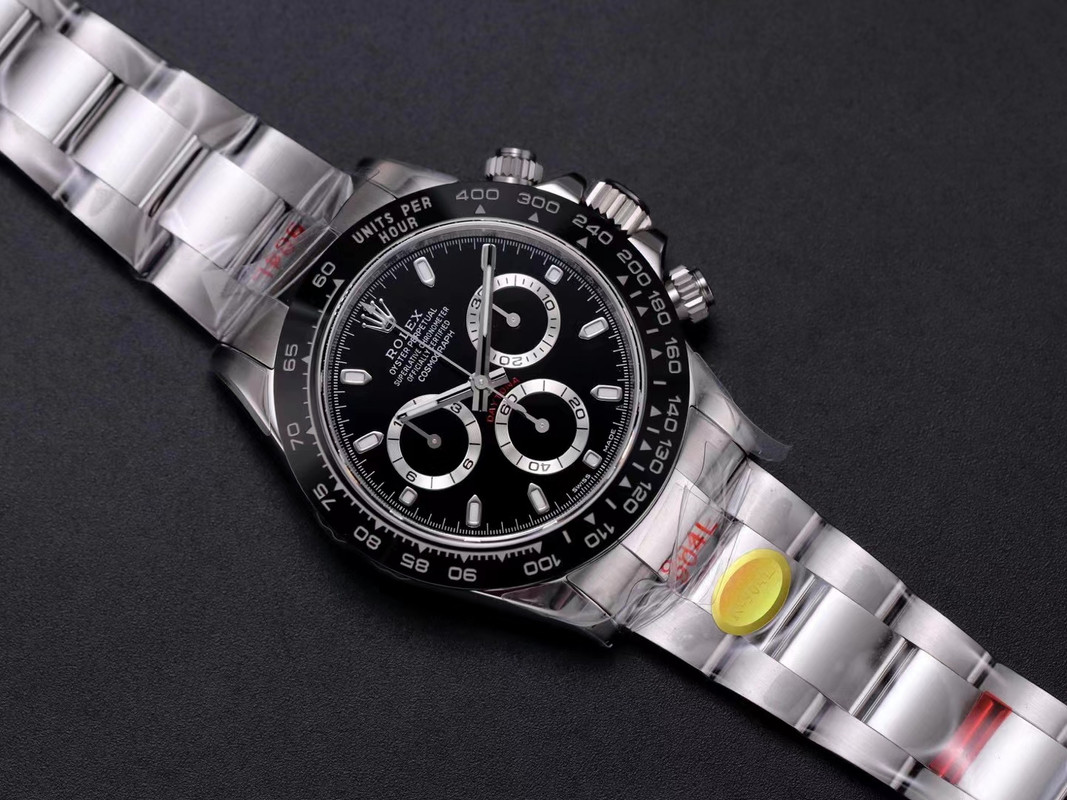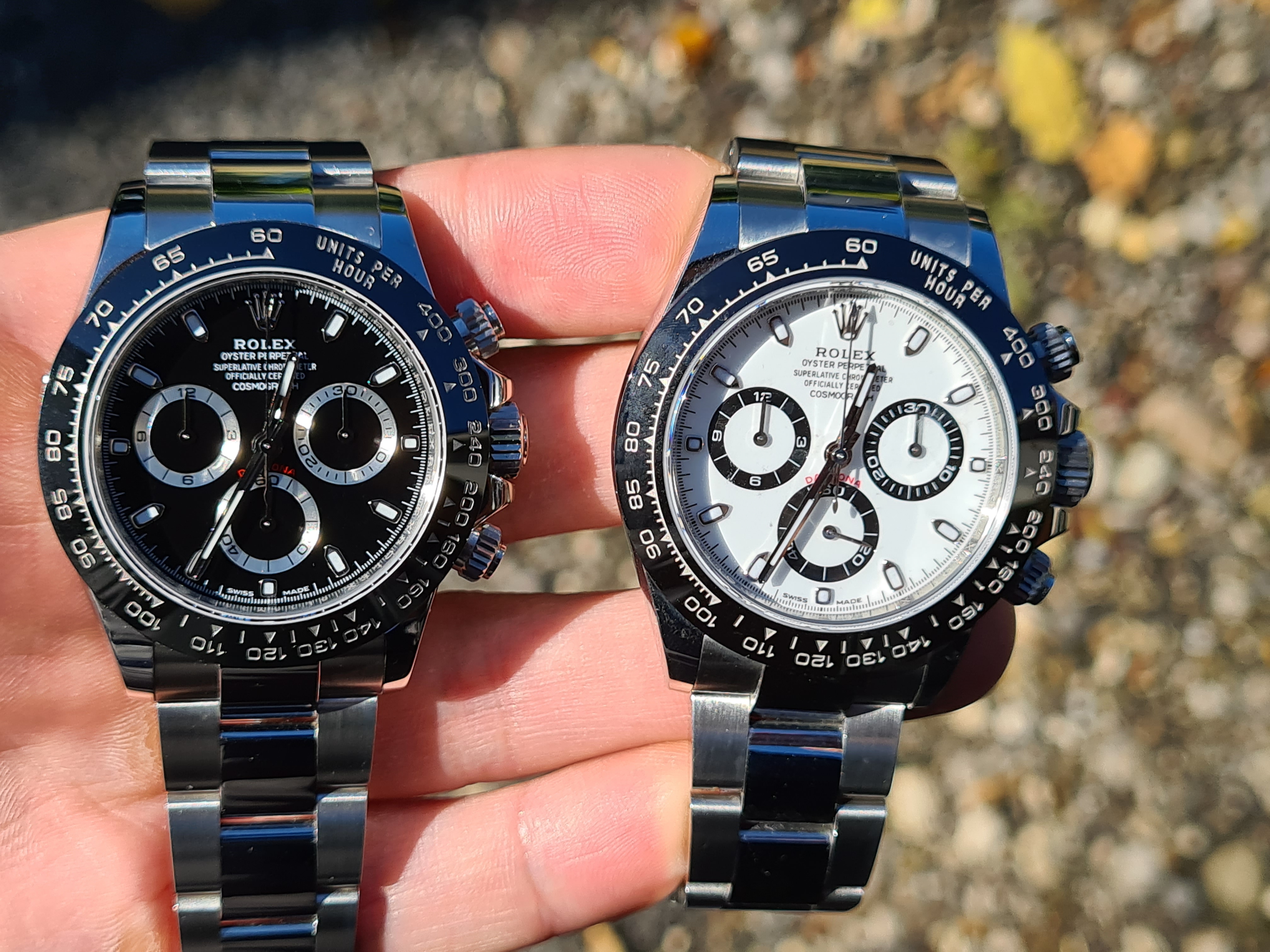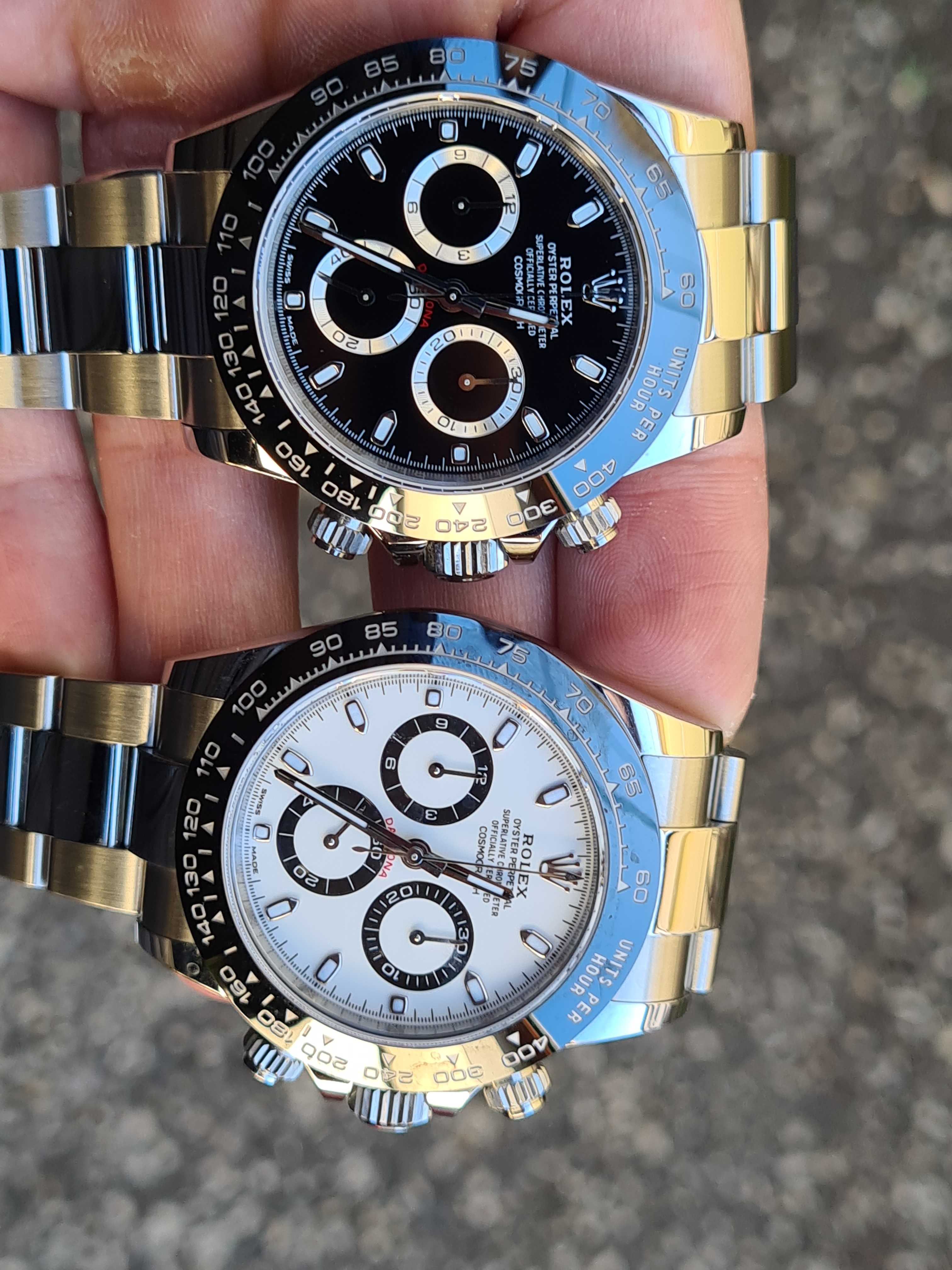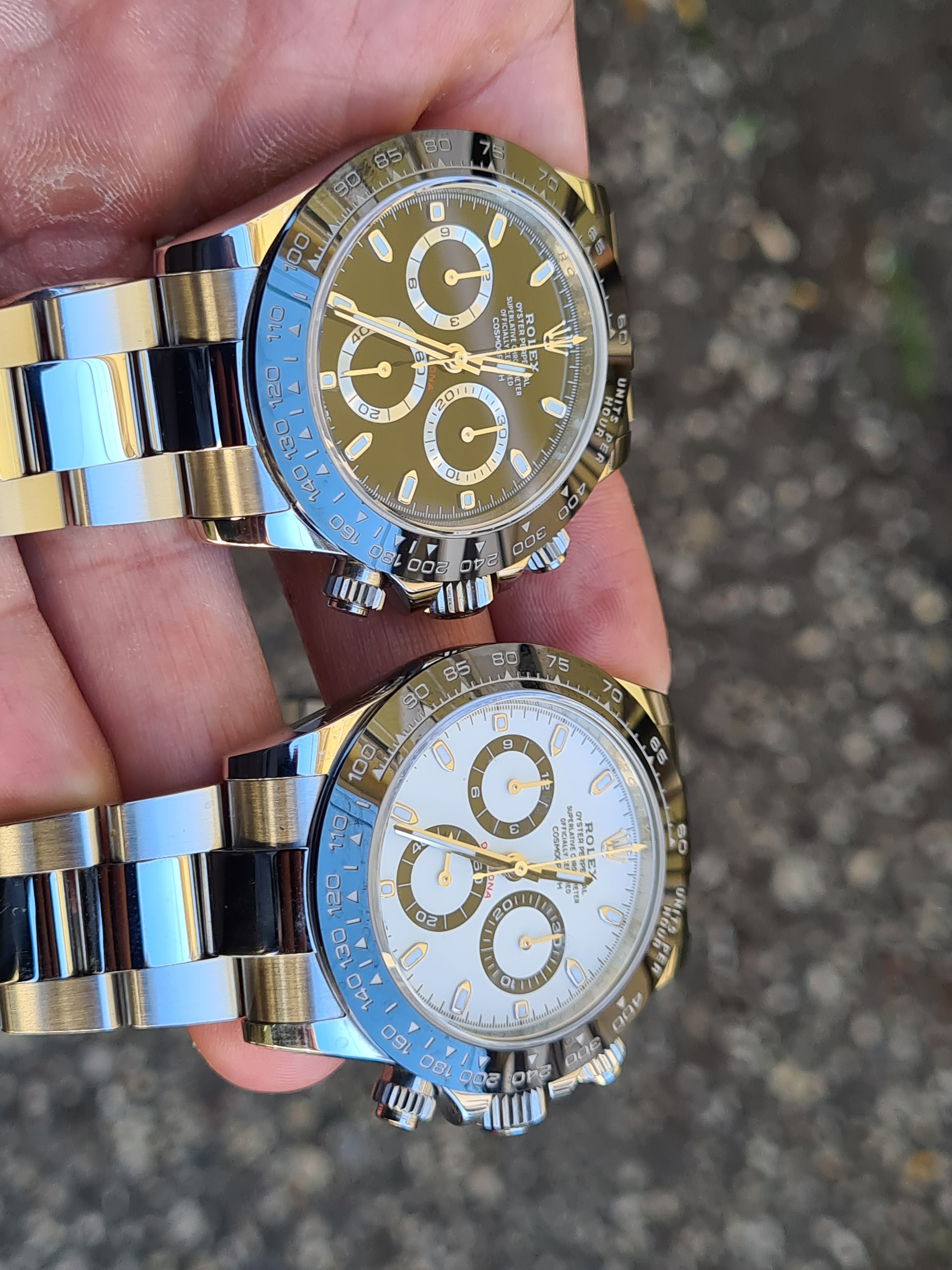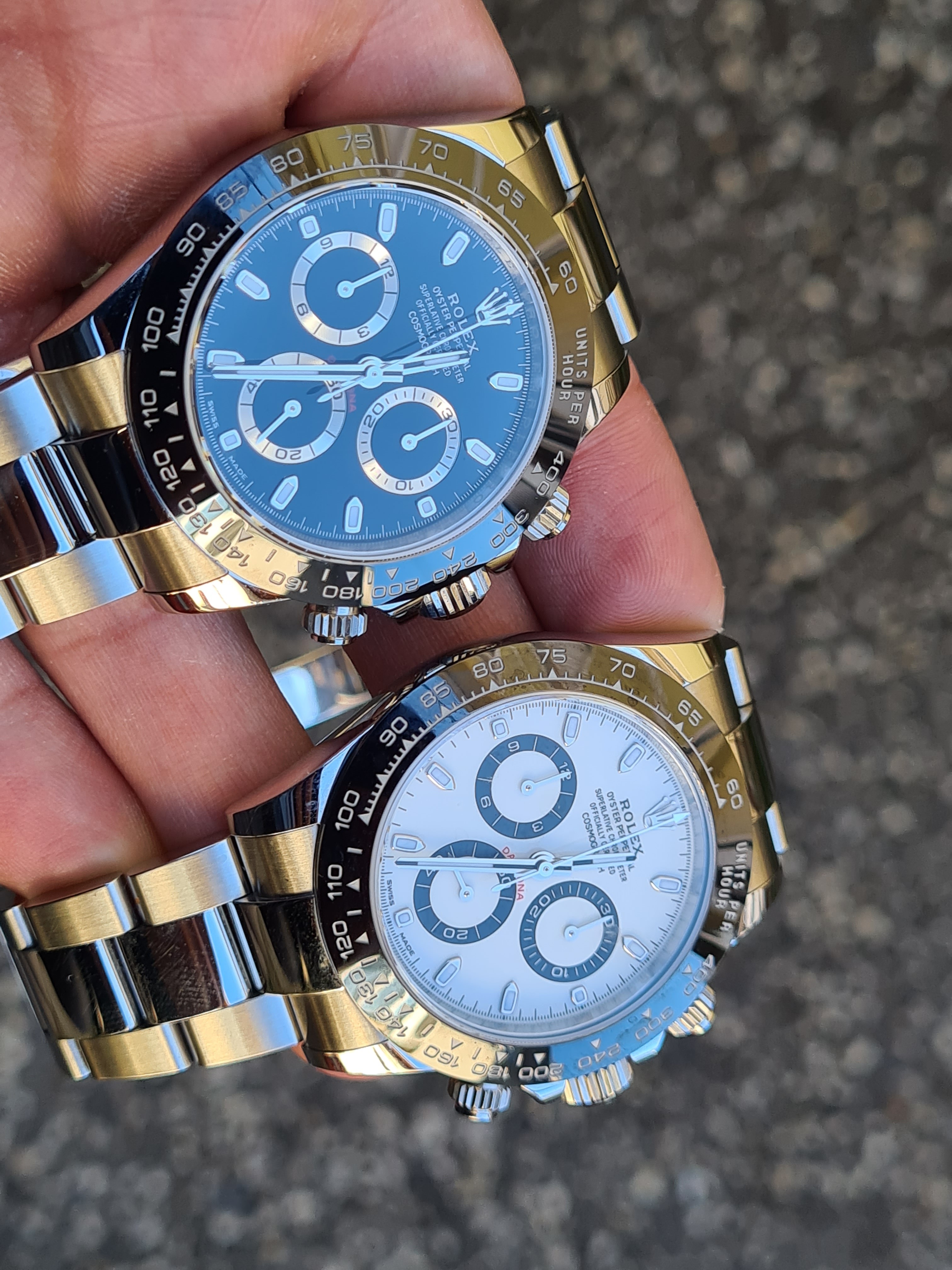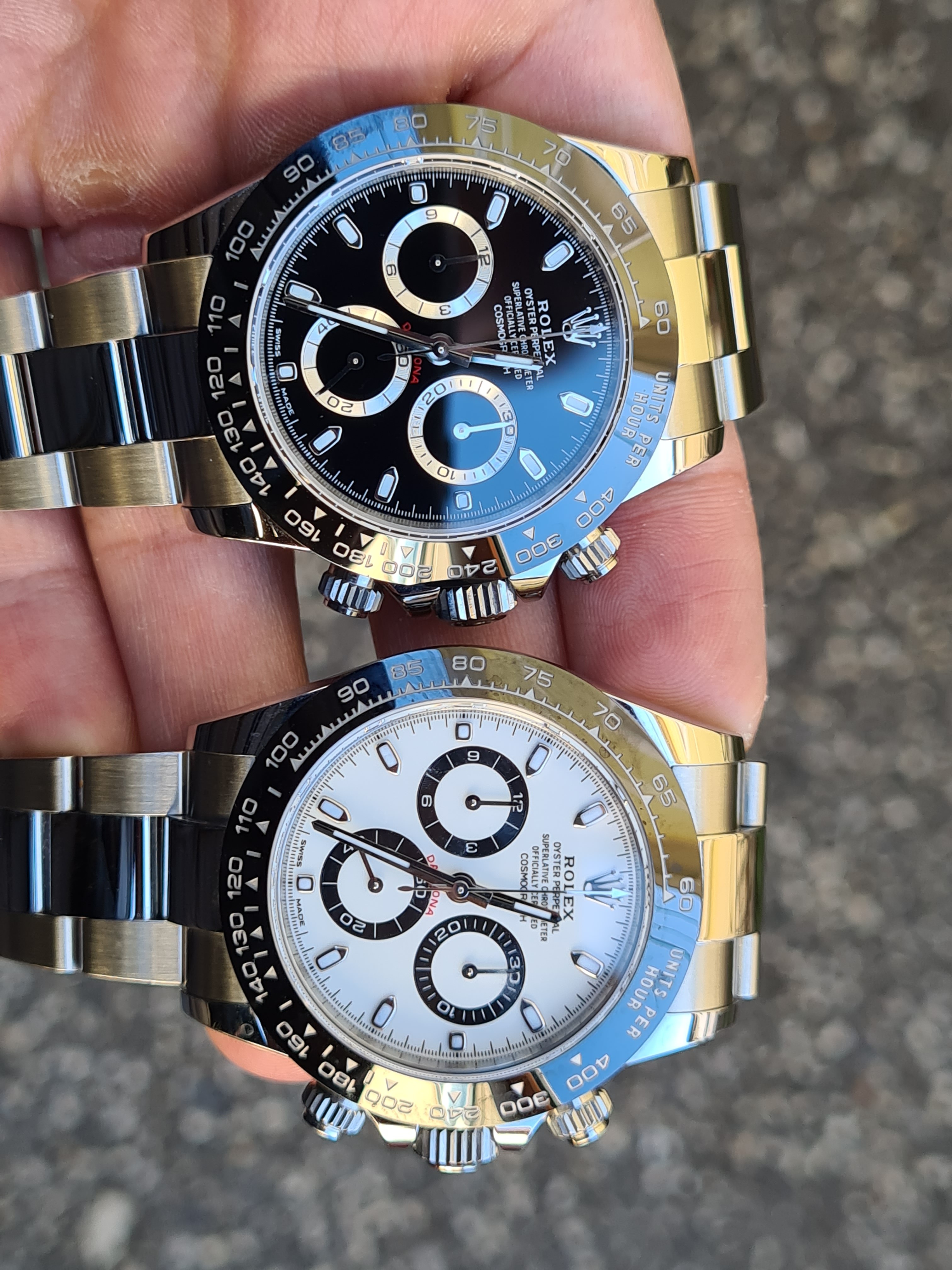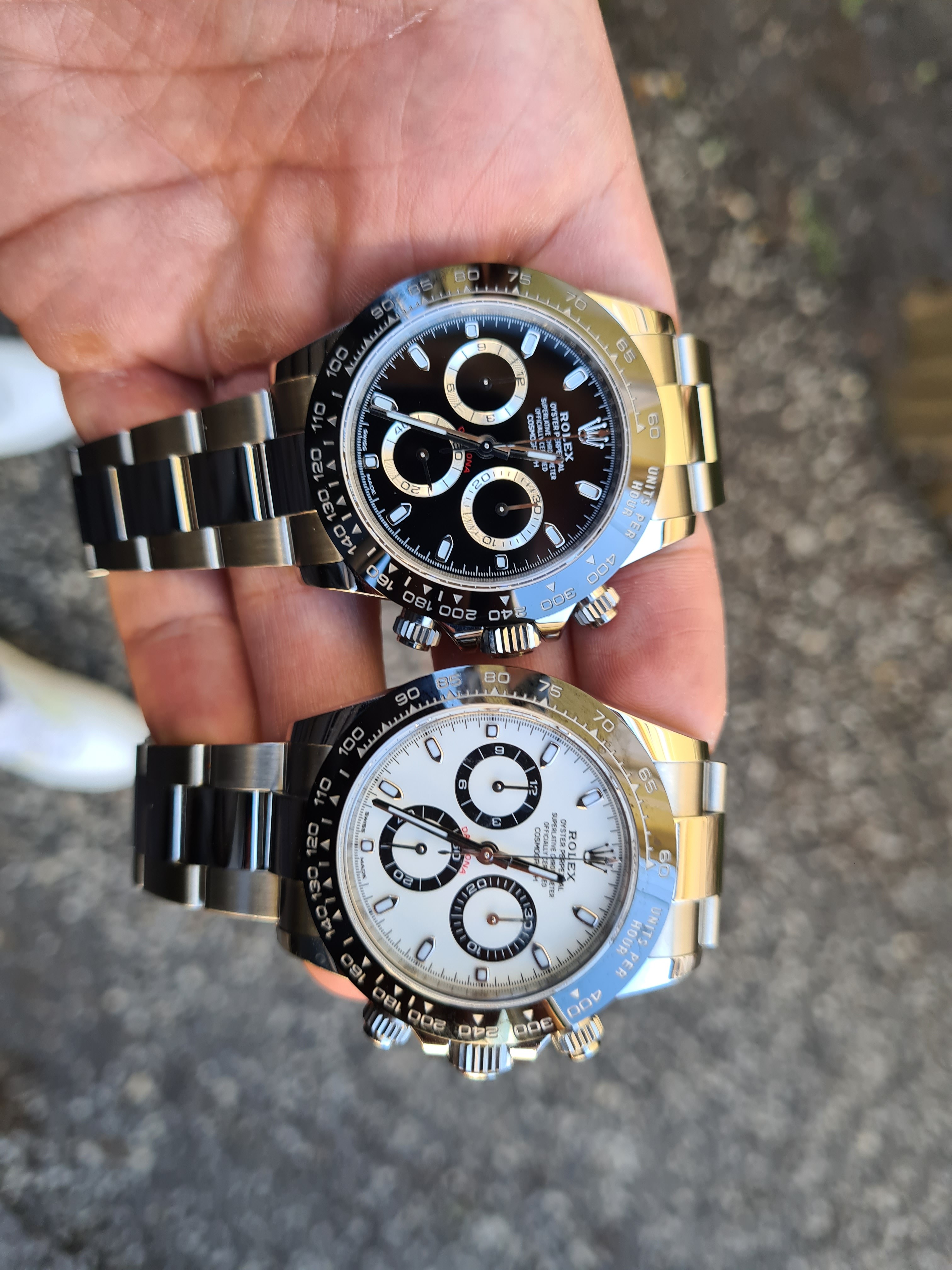- 10/10/13
- 3,553
- 1,564
- 113
It's really easy to tell a v1-2.2 from a v3/4

Obvious differences in the bezel:
1. The shape of the S. The lettering is generally slimmer on v3 onwards, but the S is a particularly stark contrast. On the earlier versions the S is very wide, on the newer versions it is correctly extremely slim.
2. The serif on the R. Look at the way the R curls up at the end.
When it comes down to trying to tell the difference between versions by the dial, the most appropriate is to measure against the gen in a natural light setting. Regardless of version, the noob dial has never been acceptable for me - the ROLEX lettering has never been correct, the O looks like a donut - rolex has never used a block O that is consistent in thickness all the way round on any watch, ever.
On the other hand I've seen first hand very marginal differences in subdial thickness on one generation of gen dials, I think it was the 2017 model. You can tell by measuring the difference in space between the subdial and the indices at 2.
Trying to measure the perceived subdial thickness any other way is likely to be inaccurate, because the satin finish of the outer edge of the subdial can make it seem thicker or thinner depending on lighting conditions from an image rather than in person.
Sent from my iPhone using Tapatalk

Obvious differences in the bezel:
1. The shape of the S. The lettering is generally slimmer on v3 onwards, but the S is a particularly stark contrast. On the earlier versions the S is very wide, on the newer versions it is correctly extremely slim.
2. The serif on the R. Look at the way the R curls up at the end.
When it comes down to trying to tell the difference between versions by the dial, the most appropriate is to measure against the gen in a natural light setting. Regardless of version, the noob dial has never been acceptable for me - the ROLEX lettering has never been correct, the O looks like a donut - rolex has never used a block O that is consistent in thickness all the way round on any watch, ever.
On the other hand I've seen first hand very marginal differences in subdial thickness on one generation of gen dials, I think it was the 2017 model. You can tell by measuring the difference in space between the subdial and the indices at 2.
Trying to measure the perceived subdial thickness any other way is likely to be inaccurate, because the satin finish of the outer edge of the subdial can make it seem thicker or thinner depending on lighting conditions from an image rather than in person.
Sent from my iPhone using Tapatalk



